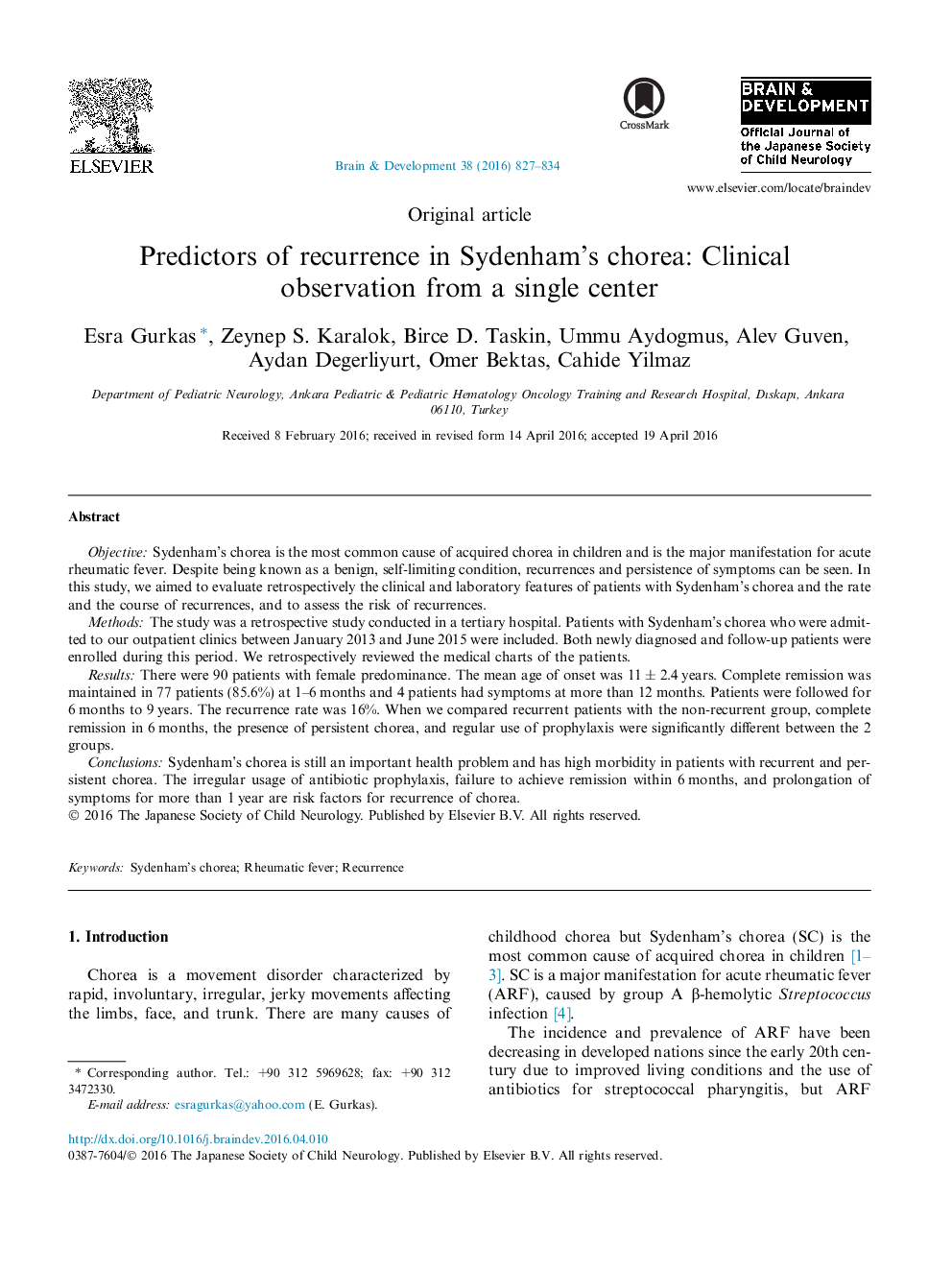| Article ID | Journal | Published Year | Pages | File Type |
|---|---|---|---|---|
| 3036426 | Brain and Development | 2016 | 8 Pages |
ObjectiveSydenham’s chorea is the most common cause of acquired chorea in children and is the major manifestation for acute rheumatic fever. Despite being known as a benign, self-limiting condition, recurrences and persistence of symptoms can be seen. In this study, we aimed to evaluate retrospectively the clinical and laboratory features of patients with Sydenham’s chorea and the rate and the course of recurrences, and to assess the risk of recurrences.MethodsThe study was a retrospective study conducted in a tertiary hospital. Patients with Sydenham’s chorea who were admitted to our outpatient clinics between January 2013 and June 2015 were included. Both newly diagnosed and follow-up patients were enrolled during this period. We retrospectively reviewed the medical charts of the patients.ResultsThere were 90 patients with female predominance. The mean age of onset was 11 ± 2.4 years. Complete remission was maintained in 77 patients (85.6%) at 1–6 months and 4 patients had symptoms at more than 12 months. Patients were followed for 6 months to 9 years. The recurrence rate was 16%. When we compared recurrent patients with the non-recurrent group, complete remission in 6 months, the presence of persistent chorea, and regular use of prophylaxis were significantly different between the 2 groups.ConclusionsSydenham’s chorea is still an important health problem and has high morbidity in patients with recurrent and persistent chorea. The irregular usage of antibiotic prophylaxis, failure to achieve remission within 6 months, and prolongation of symptoms for more than 1 year are risk factors for recurrence of chorea.
